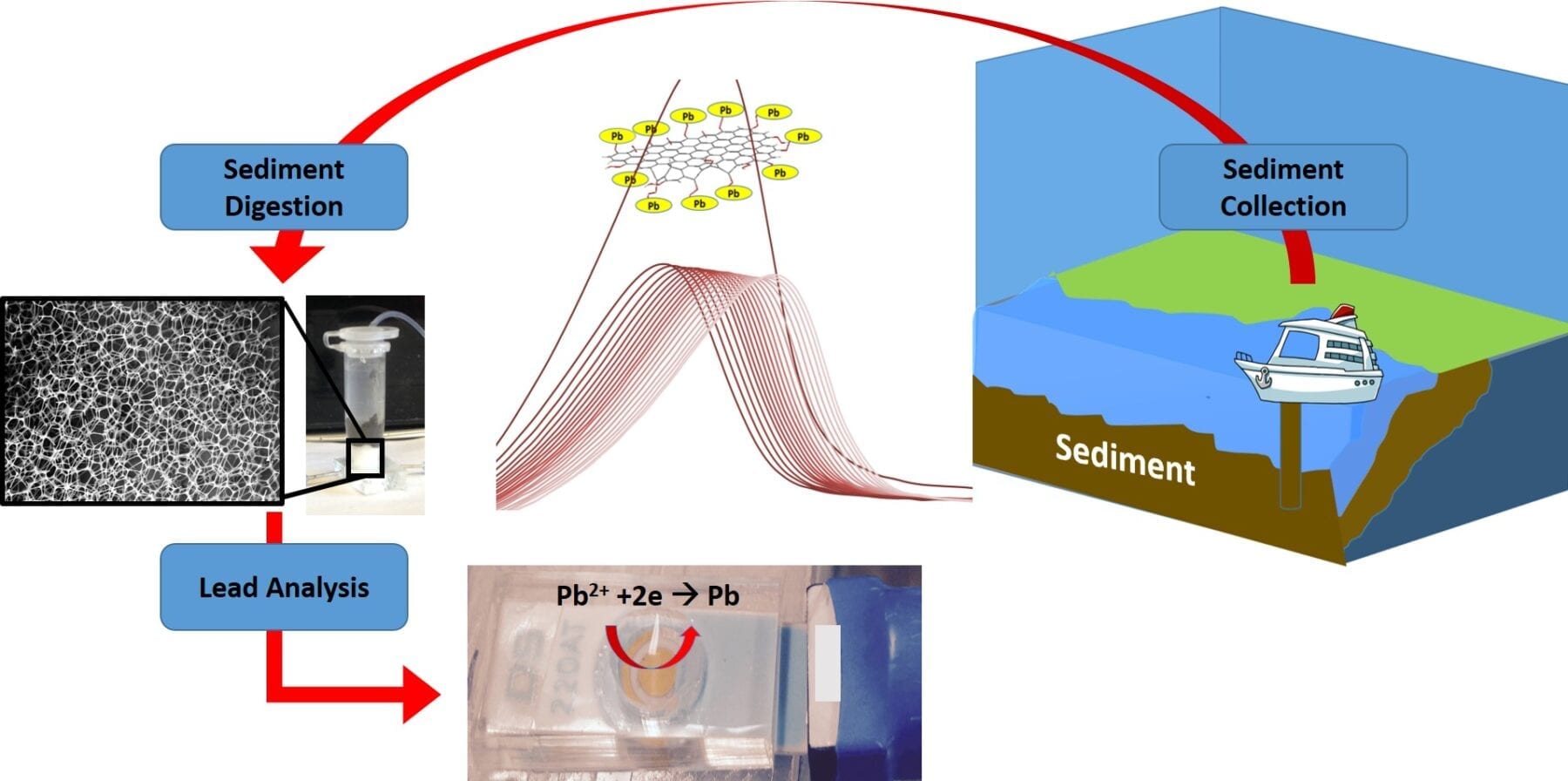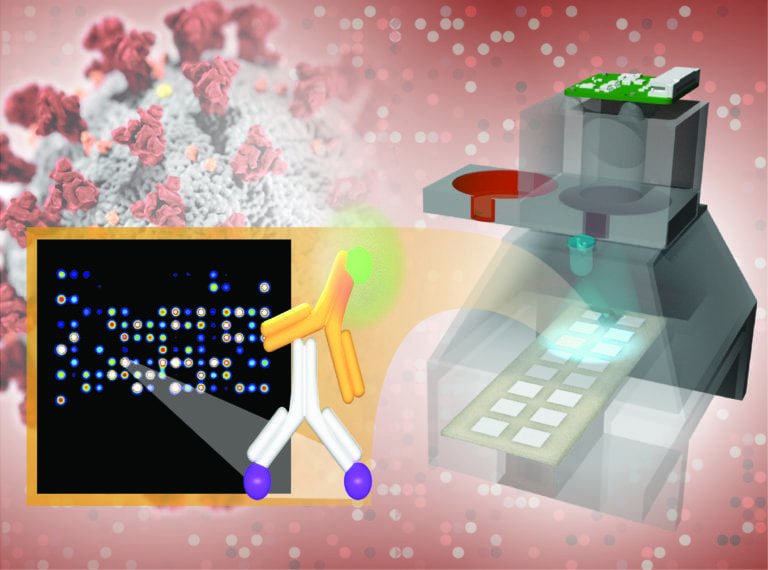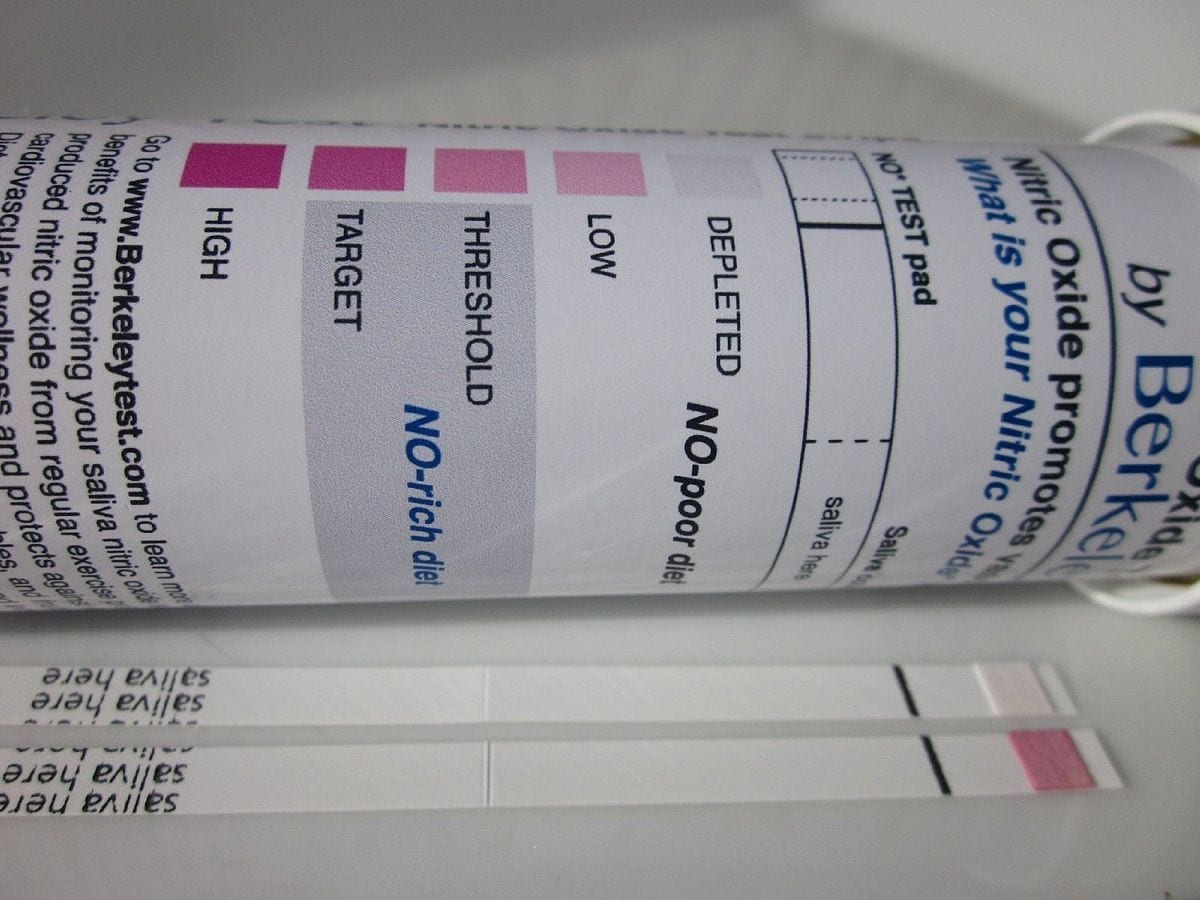
Sediments collected by a ship can be rapidly tested for toxic lead with a new portable lab-on-a-chip device. The miniature device extracts lead from a sample and purifies it, using graphene oxide as a lead detector. Image: Azam Gholizadeh
Rutgers researchers have created a miniature device for measuring trace levels of toxic lead in sediments at the bottom of harbors, rivers and other waterways within minutes – far faster than currently available laboratory-based tests, which take days.
The affordable lab-on-a-chip device could also allow municipalities, water companies, universities, K-12 schools, daycares and homeowners to easily and swiftly test their water supplies. The research is published in the IEEE Sensors Journal.
“In addition to detecting lead contamination in environmental samples or water in pipes in homes or elementary schools, with a tool like this, someday you could go to a sushi bar and check whether the fish you ordered has lead or mercury in it,” said senior author Mehdi Javanmard, an associate professor in the Department of Electrical and Computer Engineering in the School of Engineering at
.
“Detecting toxic metals like lead, mercury and copper normally requires collecting samples and sending them to a lab for costly analysis, with results returned in days,” Javanmard said. “Our goal was to bypass this process and build a sensitive, inexpensive device that can easily be carried around and analyze samples on-site within minutes to rapidly identify hot spots of contamination.”
The research focused on analyzing lead in sediment samples. Many river sediments in New Jersey and nationwide are contaminated by industrial and other waste dumped decades ago. Proper management of contaminated dredged materials from navigational channels is important to limit potential impacts on wildlife, agriculture, plants and food supplies. Quick identification of contaminated areas could enable timely and cost-effective programs to manage dredged materials.
The new device extracts lead from a sediment sample and purifies it, with a thin film of graphene oxide as a lead detector. Graphene is an atom thick layer of graphite, the writing material in pencils.
More research is needed to further validate the device’s performance and increase its durability so it can become a viable commercial product, possibly in two to four years.
The Latest Updates from Bing News & Google News
Go deeper with Bing News on:
Lab-on-a-chip contaminant detector
- It may be time to eliminate the best-before date on food packaging, say smart packaging researchers
The inventors of a suite of tests that enable food packages to signal whether their contents are contaminated are working to bring producers and regulators together to get their inventions into ...
- Chip Scoggins
Chip Scoggins is a sports columnist and enterprise writer for the Star Tribune. He has worked at the Star Tribune since 2000 and previously covered the Vikings, Gophers football, Wild, Wolves and ...
- Demonstration of heralded three-photon entanglement on a photonic chip
Photonic quantum computers are computational tools that leverage quantum physics and utilize particles of light (i.e., photons) as units of information processing. These computers could eventually ...
- This tiny chip can safeguard user data while enabling efficient computing on a smartphone
A new chip can efficiently accelerate machine-learning workloads on edge devices like smartphones while protecting sensitive user data from two common types of attacks -- side-channel attacks and ...
- Best Smoke Detector for 2024
He is in charge of developing and carrying out testing procedures for a wide variety of home appliances and smart devices including robot vacuums, smoke/CO detectors and air conditioning units.
Go deeper with Google Headlines on:
Lab-on-a-chip contaminant detector
[google_news title=”” keyword=”lab-on-a-chip contaminant detector” num_posts=”5″ blurb_length=”0″ show_thumb=”left”]
Go deeper with Bing News on:
Lead detector
- Ex-SocGen Trader Says He Was Fired After Bank Failed to Detect His Bets
A former Hong Kong-based Societe Generale SA trader claimed he was fired and said the French lender should share blame for failing to detect his risky bets.Most Read from BloombergUS and Saudis Near ...
- Authorities arrest suspect in killing of Chicago Police Officer Luis Huesca
The Chicago Police Department and the U.S. Marshals have taken Xavier L. Tate Jr. into custody on suspicion of murder.
- Corelight Gets $150M to Expand Detection, Improve Workflows
Corelight has secured $150 million on a $900 million valuation to support future growth and secure full independence. The Series E funds will be used to enhance the ...
- News Explorer — Artificial Intelligence Can Detect Money Laundering on the Bitcoin Blockchain
Artificial Intelligence Can Detect Money Laundering on the Bitcoin Blockchain. A new report by blockchain analysis firm Elliptic and the MIT-IBM Watson AI Lab reveals that artific ...
- The SEC has Ethereum in its crosshairs. But does the agency think Ether is a security?
Consensys accused the SEC of secretly declaring Ether to be a security in an unredacted court filing on Monday, though the reality may be murkier ...
Go deeper with Google Headlines on:
Lead detector
[google_news title=”” keyword=”lead detector” num_posts=”5″ blurb_length=”0″ show_thumb=”left”]










